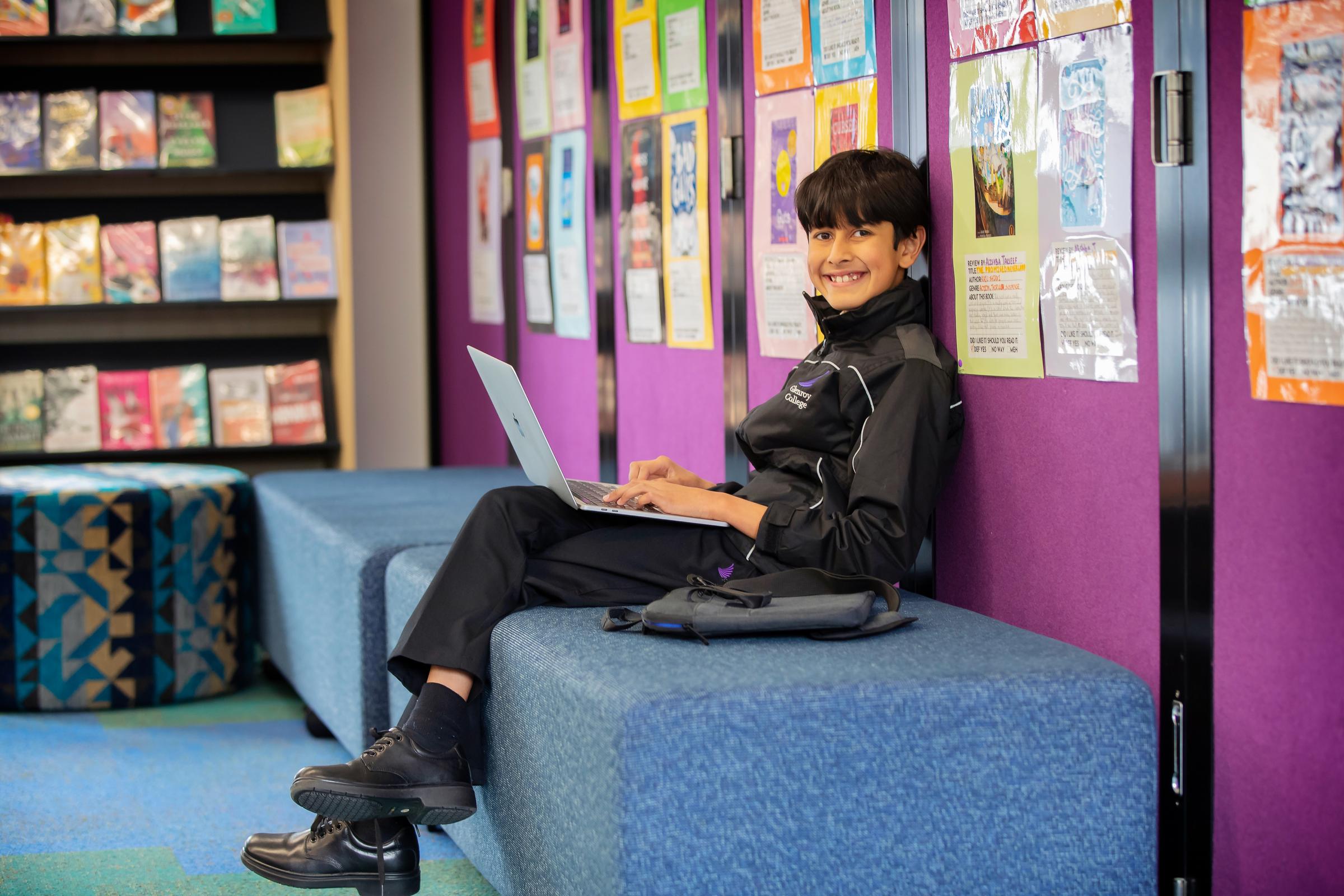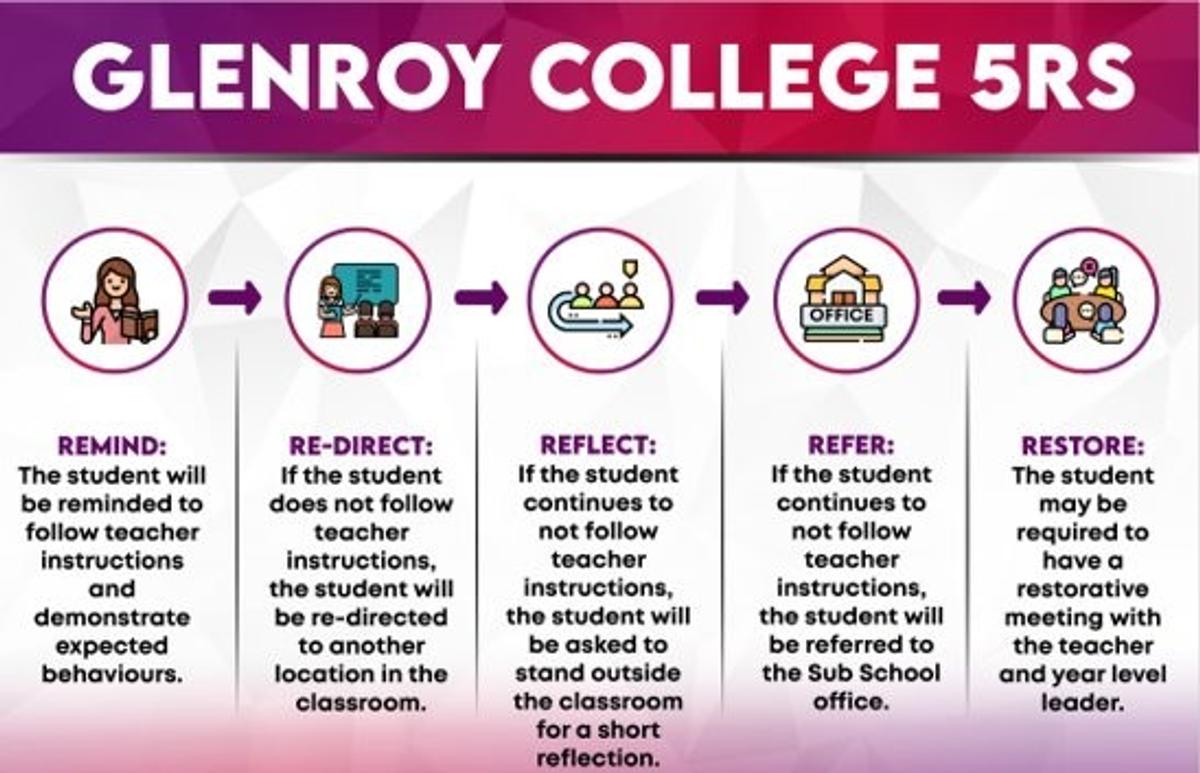School Wide Positive Behaviours

Student Engagement
We use the School Wide Positive Behaviour Support (SWPBS) Framework to engage students in their learning at Glenroy College. Key strategies that we deploy in our learning spaces to encourage positive behaviour include:
Relationships:
Showing an interest in the students by getting to know them (in class and in the yard), remembering the positive ways that they learn and making positive phone calls home.
Using unconditional positive regard (UPR) by welcoming students to class, avoiding raised voices, being friendly and seeing each lesson as an opportunity to reset and restart.
We use restorative practices and restorative language. When a student misbehaves, we focus on who has been harmed from this behaviour, and how this can be mended.
Student placement:
Place tables and chairs in a way that creates space for independent work, collaborative work, floor time and circle time.
Select where students sit, particularly if they need to be able to see or hear more closely or need additional supervision of screens.
Seating plans can be created by the teacher or group of teachers, and if used, regularly evaluated.
Ongoing and active supervision by the teacher throughout all lessons is important to support behaviour choices and to check on student learning.
Student materials:
When a teacher is providing direct instruction, or a video is being shown, or there is a presenter, screens should be shut.
The use of headphones or ability to listen to music is a privilege, not a right, and is at teacher discretion.
Student movement:
Students should not be allowed to leave class without a signed diary and should rarely be sent out in groups or pairs.
Students don’t have access to the toilets during session 1, 3 and 4 (just after the break times).
Language (verbal and non-verbal) to use:
Reminding students of our learning expectations, consequences and values.
“Active Listening” being a keyword with a common behaviour expectation
Using golden statements and positive praise for students who are doing the right thing: ‘I can see 19 students working quietly, how many should we see’ - let students respond - get peer reinforcement
Remind students that they have a choice regarding their behaviour - give them power to do the right thing
Work out what strategy you want to use to get student attention in the class.
Expectations and consequences:
We use the “5Rs” to support student learning, engagement and behaviour in the classroom. This is a clear process that requires timely and explicit language to address students who aren’t following teacher instructions.

